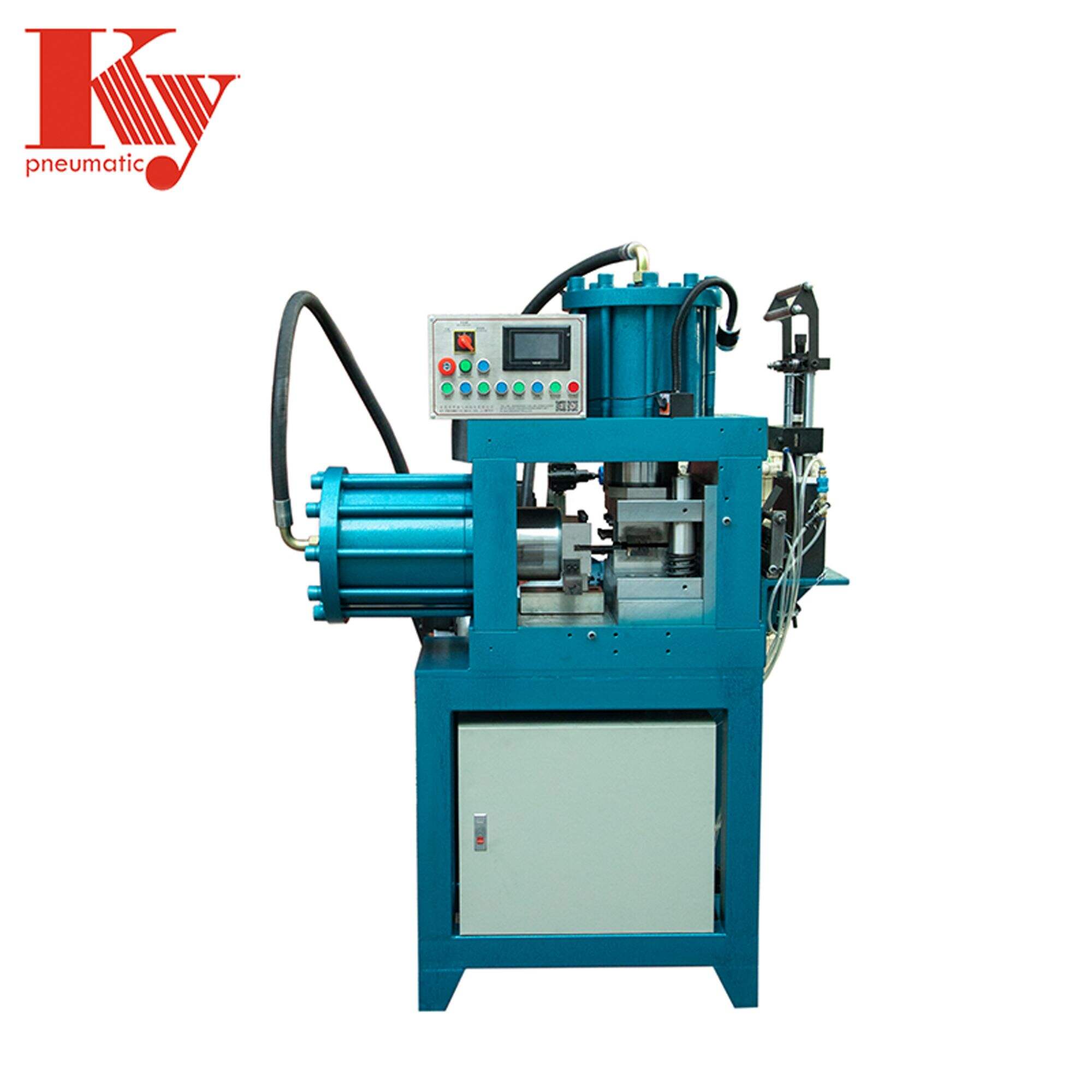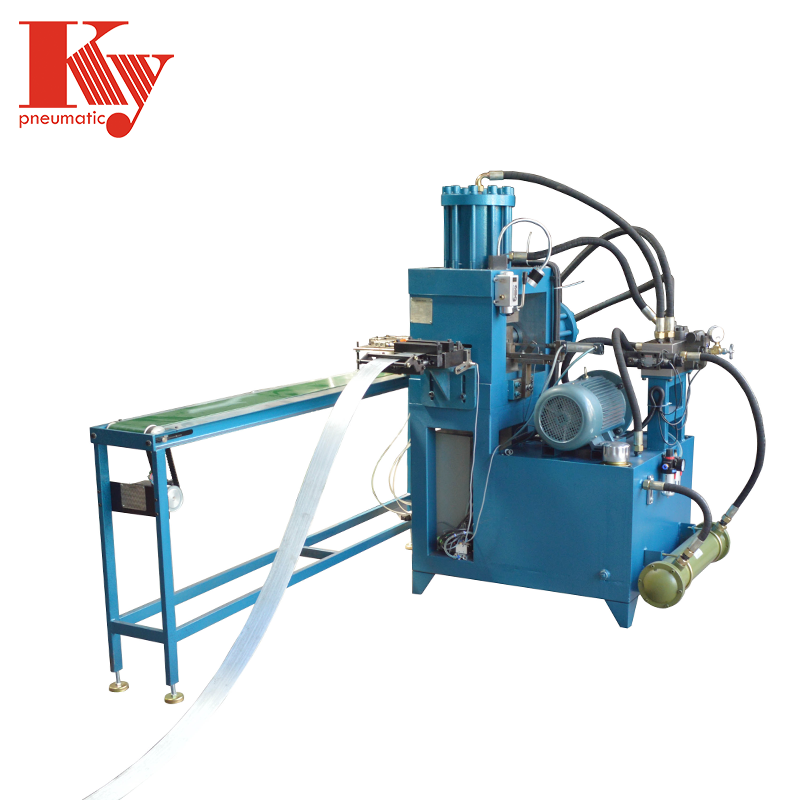KY Nailing Equipment: Empowering Furniture Manufacturing and Creating a New Industry Benchmark
Setting New Standards in Furniture Manufacturing Equipment
The Evolution of Industrial Fastening Technology
Industrial fastening technology has undergone significant transformations throughout history, particularly in furniture manufacturing. Initially, furniture was assembled through manual fastening techniques like nails and screws, which required intensive labor and offered limited precision. The advent of mechanical fasteners marked a key milestone, enhancing productivity and allowing for more complex furniture designs. Over time, technology evolved from manual machines to automated systems that significantly improved efficiency and accuracy. According to manufacturing journals, automation in fastening technology has drastically reduced production times and labor costs, leading to increased throughput and improved product consistency. These innovations have redefined the furniture manufacturing landscape, enabling high-quality production at scale.
Key Performance Metrics for Modern Nail Machines
Understanding the critical performance metrics that modern nail machines should meet is essential in furniture manufacturing. Speed, precision, and reliability are key indicators of a machine's efficiency, which directly affect productivity and product quality. According to manufacturing standards organizations, metrics such as nails per minute, error rate, and durability of the output are vital when selecting equipment. These parameters influence purchasing decisions, as manufacturers seek to balance high throughput with minimal wastage and maintenance. Case studies highlight significant improvements in production efficiency and quality control after adopting advanced nail machine technologies, demonstrating their impact on elevating manufacturing capabilities.
Impact of Precision Engineering on Production Quality
Precision engineering dramatically enhances furniture production quality, particularly concerning dimensions and fit. Technologies such as CNC (Computer Numerical Control) play a pivotal role in achieving precise cuts and fittings, ensuring each component meets exact specifications. Research indicates that higher precision correlates with reduced material waste and increased product lifespan, benefiting manufacturers significantly. By integrating precision tools and techniques, furniture manufacturers can meet stringent quality standards, minimize production errors, and optimize resource usage. These advancements are crucial as they align with consumer expectations for high-quality, durable, and aesthetically pleasing furniture products, driving innovation in the industry.
Precision-Driven Manufacturing Solutions
Advanced PLC Control Systems in Wood Fastening
PLC (Programmable Logic Controller) systems are crucial in modern wood fastening applications due to their ability to streamline and enhance production processes. These systems are designed to provide real-time monitoring and control, enabling manufacturers to optimize their operations efficiently. By automating routine tasks and offering precise control, PLC systems reduce manual intervention, enhance accuracy, and improve the overall efficiency of wood fastening processes. For example, in several factories, the integration of PLC systems has resulted in measurable gains in operational productivity by significantly reducing downtime and increasing production throughput. Their intuitive diagnostics and adaptability to complex manufacturing environments make them indispensable for manufacturers aiming for higher operational efficiency.
Error Margin Reduction Through Automated Calibration
Automated calibration is a method used to minimize error margins in manufacturing equipment, thus enhancing product quality. This approach involves using advanced tools and software to adjust and fine-tune machinery settings, ensuring consistent accuracy in production. Notable case studies have demonstrated that the implementation of automated calibration tools significantly reduces production faults and increases overall output quality. For instance, a furniture manufacturer reported a 30% decrease in error rates and a marked improvement in product consistency after integrating automated calibration systems into their production lines. Experts in the manufacturing sector predict ongoing advancements in calibration technology, advocating for its role in achieving superior manufacturing precision and setting new standards for quality control.
Durability Enhancements in Pin Making Machinery
Recent innovations in materials and technology have revolutionized the durability of pin making machinery. These advancements focus on utilizing high-quality materials and cutting-edge engineering to prolong machine lifespan while minimizing maintenance requirements. Statistical evidence suggests that incorporating such innovations can extend the longevity of pin making equipment by up to 40%, significantly reducing downtime and associated costs. Furthermore, industry experts emphasize the importance of machine durability in ensuring uninterrupted production and maintaining high levels of operational efficiency. Investing in durable machinery is essential not only for minimizing operational disruptions but also for enhancing long-term manufacturing prowess.
Best Practices in Furniture Production Automation
Optimizing Workflow with Staple Machine Integration
To enhance productivity in furniture production, the integration of staple machines into existing workflows is pivotal. Effective integration requires a strategic approach to ensure that these machines complement the production processes rather than disrupt them. Here is a step-by-step guide to integrating staple machines:
1. Assessment: Analyze current workflow to identify stages where staple machines can be effectively incorporated.
2. Selection: Choose the right staple machine based on the specific requirements and volume of production.
3. Training: Provide comprehensive training for operators to ensure efficient utilization of the machines.
4. Implementation: Install the machines and adjust the work process to incorporate their usage seamlessly.
5. Evaluation: Monitor performance and make necessary adjustments to improve output quality and efficiency.
Industry reports, such as those focusing on productivity enhancements in the furniture sector, have documented significant increases in production rates after the successful integration of these machines. The optimized workflow not only improves speed but also maintains the precision and quality of the end products.
Safety Protocols for High-Speed Wire Drawing Systems
Safety is paramount when operating high-speed wire drawing machines, which are critical in furniture manufacturing. These machines possess inherent risks, requiring stringent safety protocols to protect workers and equipment. Key safety measures include:
- Conducting regular risk assessments to identify potential hazards.
- Enforcing the use of personal protective equipment (PPE) such as gloves, helmets, and eye protection.
- Implementing emergency stop mechanisms and clear warning signs to prevent accidents.
- Establishing routine maintenance checks to ensure machines operate at optimal safety levels.
Statistics highlight that where safety protocols are meticulously followed, there is a noticeable reduction in machinery-related workplace accidents. For instance, studies have recorded as much as a 30% decrease in incidents when comprehensive safety measures are in place, underscoring the importance of adherence to these protocols.
Maintenance Strategies for Wood Nail Making Equipment
Effective maintenance strategies are essential to extend the lifecycle of wood nail making machines and sustain production efficiency. A proactive approach to maintenance, distinguishing between scheduled and reactive maintenance, is key.
- Scheduled Maintenance: Regularly planned inspections and servicing can prevent unexpected breakdowns and extend machine lifespan. Tasks can include lubrication of moving parts, inspection of wear and tear, and replacement of outdated components.
- Reactive Maintenance: Responding to immediate issues as they arise can minimize downtime but should not replace scheduled maintenance. This approach is best when unexpected faults occur, requiring quick resolution to maintain production flow.
Data suggests that companies implementing regular maintenance schedules observe up to 40% higher equipment uptime. Moreover, these practices often result in significantly reduced repair costs, illustrating the long-term financial benefits of a disciplined maintenance regimen. This approach ensures equipment remains in optimal condition, supports continual production, and minimizes operational disruptions.
KY's Innovative Nail Production Systems
T Brad Nail Maker: Dual-Solution Flexibility
The T Brad Nail Maker exemplifies versatility in nail production systems, offering dual-solution strategies to meet diverse customer needs. This machine excels in producing various types of nails by using either a wire band and wire straightening machine combination or a more comprehensive setup with wire flattening and gluing machines. Its adaptability is enhanced by features like PLC automatic control and adjustable production speeds of 100-160 pieces per minute. According to user testimonials, the T Brad Nail Maker has significantly streamlined production processes, making it a highly valued asset in nail manufacturing.
F Series Machine: High-Speed Assembly Solutions
The F Series Machine is engineered for high-speed nail production, significantly boosting throughput in manufacturing operations. Capable of producing between 100 and 160 rows of nails per minute, it is an exemplar of productivity and efficiency in assembly solutions. High-speed capabilities offer substantial cost reductions by minimizing labor input and allowing quicker turnaround times. Reports from production lines have shown an increase in volume and efficiency, positioning the F Series Machine as an essential tool for manufacturers aiming to enhance their competitive edge.
Pneumatic Nailer: Dual-Operation Efficiency
The Auto Pneumatic Brad Nail Making Machine showcases advanced dual-operation efficiency, allowing operators to manage two units concurrently, thus optimizing labor and enhancing output. These machines integrate advanced pneumatic systems that support precise and adaptable production speeds of 70-125 nails per minute, offering extensive application across sectors such as construction and furniture manufacturing. Clients have reported significant improvements in efficiency, attributing success to the machine's robust automation and precision capabilities.
T/F Hybrid System: Multi-Gauge Adaptability
The T/F Hybrid System offers unparalleled flexibility in nail production, accommodating various nail gauges, making it ideal for diverse manufacturing requirements. This multi-gauge adaptability ensures that manufacturers can meet varied client demands without extensive machine adjustments, a feature increasingly demanded in market trends. By integrating automated control and efficient workflows, this system represents a future-forward solution for production environments looking to innovate and expand their capabilities.
Sustainable Manufacturing & Future Trends
Energy-Efficient Operation in Staple Production
Energy-efficient practices are vital in staple production to promote sustainability and reduce costs. By optimizing energy usage, companies can minimize their environmental impact and operate more sustainably, which is increasingly important in today's market. Innovations such as advanced pin making machines and automated staple machines contribute significantly to energy-efficient operations. These machines often feature capabilities like optimized power management and smart scheduling to reduce wastage. Industry benchmarks support the importance of these practices, showing that manufacturers who adopt energy-efficient technologies can reduce energy consumption significantly, resulting in substantial savings. Such efforts not only lower operational costs but also enhance competitiveness in a market where sustainable practices are a key differentiator.
Waste Reduction Through Smart Material Handling
Smart material handling techniques are transforming waste reduction efforts within the furniture manufacturing industry. These techniques involve the strategic use of technologies and processes to manage materials efficiently, minimizing waste generation. Implementing smart technologies like IoT-enabled inventory systems and automated material storage solutions can streamline inventory management and reduce errors. The benefits of these technologies include improved material tracking, real-time inventory updates, and optimized storage solutions, all contributing to significant waste reduction. Companies like GB Projects have successfully minimized waste through efficient material handling, showcasing the practical benefits of adopting these innovations. By reducing waste, manufacturers can improve their environmental footprint, lower costs, and enhance operational efficiency.
Industry 4.0 Integration in Wire Processing Equipment
Industry 4.0 principles are revolutionizing wire processing equipment in furniture manufacturing, enabling smart and efficient operations. Industry 4.0 involves integrating advanced technologies such as real-time data analytics and IoT into manufacturing processes. This integration allows manufacturers to gain insights into their operations, optimize processes, and improve productivity. With IoT, manufacturers can monitor equipment and operations in real time, leading to more responsive and flexible production lines. Statistics illustrate a growing trend towards Industry 4.0 adoption, showing increased productivity and reduced downtime as key benefits. As manufacturers continue to embrace Industry 4.0, wire drawing machines and wood nail making machines become integral to achieving smart, efficient, and responsive production processes. These advancements pave the way for more sustainable and competitive manufacturing practices.

 EN
EN
 AR
AR
 BG
BG
 CS
CS
 FI
FI
 FR
FR
 DE
DE
 EL
EL
 HI
HI
 IT
IT
 JA
JA
 KO
KO
 PL
PL
 PT
PT
 RU
RU
 ES
ES
 TL
TL
 ID
ID
 LT
LT
 SR
SR
 UK
UK
 VI
VI
 SQ
SQ
 GL
GL
 HU
HU
 MT
MT
 TH
TH
 TR
TR
 AF
AF
 MS
MS
 AZ
AZ
 KA
KA
 BN
BN
 LO
LO
 LA
LA
 MI
MI
 MN
MN
 NE
NE
 KK
KK
 UZ
UZ




